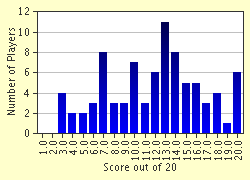Quiz Answer Key and Fun Facts
1. The four letters ACBC appear on the Lotus emblem, as these are the four letters to the names of Colin Chapman. What is his full name?
2. When did Chapman establish Lotus Engineering?
3. Chapman first started building what type of car?
4. Chapman is regarded as one of the forefathers of the rear-engined revolution, along with John Cooper. Which car that Chapman designed was the first rear-engined car Lotus produced?
5. Another revolution in 1962 in Formula One initiated by Colin Chapman, this time regarding to the chassis. What was it?
6. The Lotus 33 was an update of the Lotus 25 that had proved so successful in the hands of Clark. How much did the car weigh?
7. In 1963, Chapman and Clark made the voyage to the USA to compete in the Indianapolis 500. Clark finished 2nd in 1963 with the Lotus 29. In which car would he win the race in 1965?
8. The Lotus 43 was another brilliant Chapman design with many new features. What was NOT one of the new features?
9. Which engine giant did Lotus introduce to Grand Prix racing in 1967?
10. In 1970, Chapman designed another masterstroke which would become the winningest car in Grand Prix history and would remain the Lotus F1 machine for five years. What was the car?
11. The Lotus 78 was the first car in Formula One to take advantage of what?
12. Which driver would take the Lotus 79, basically a more refined version of the 78, to the World Drivers Title in 1978?
13. In 1968, Chapman had another brainstorm, this time realising sponsorship was the only means to survival for his racing team. Gold Leaf was the first sponsor of Team Lotus in 1968.
14. Which Lotus, which unfortunately never raced, was the first and only car to feature a twin-chassis?
15. Along with McLaren, Lotus were the first to use this type of material for chassis construction in 1981.
16. Before his untimely death from a heart-attack in December 1982, what was the last car Chapman designed?
17. After his death, which designed joined Lotus in 1983?
18. The final victory for Team Lotus in Formula One was taken by Ayrton Senna at the 1987 American Grand Prix. What chassis did he use to take the victory?
19. From their debut in 1959 to the teams sad demise at the end of 1994, Team Lotus won how many Grand Prix in just 35 years?
20. Which other manufacturer (non-F1) claimed an 80% stake in Group Lotus in 1998?
Source: Author
minardifan
This quiz was reviewed by FunTrivia editor
spanishliz before going online.
Any errors found in FunTrivia content are routinely corrected through our feedback system.


